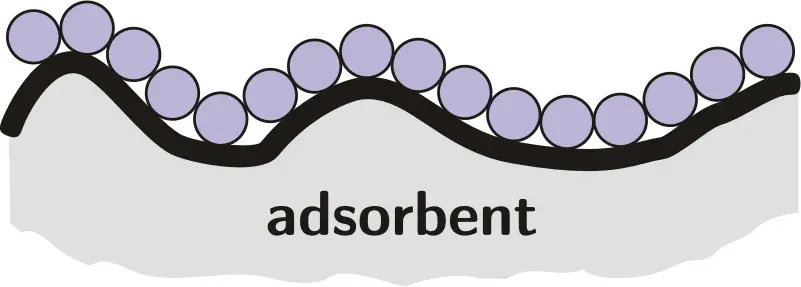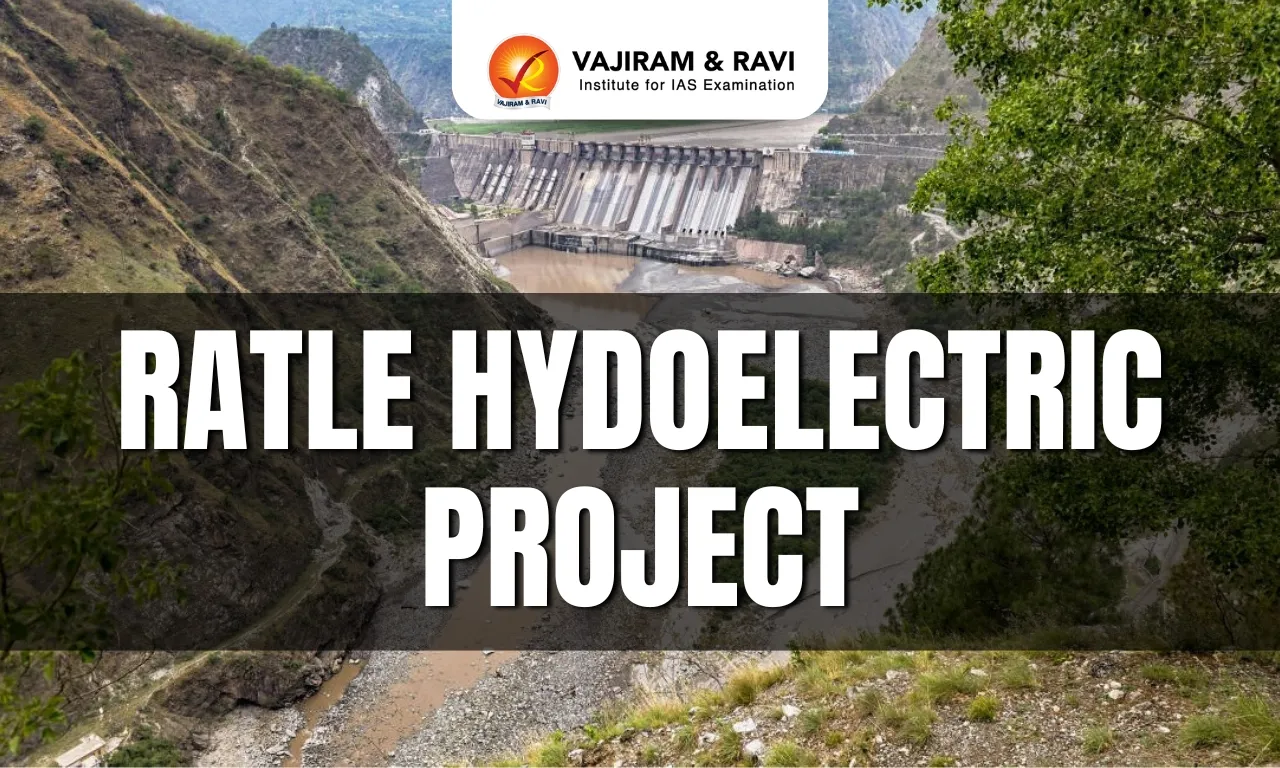About Adsorption
- It refers to the adhesion of atoms, ions, or molecules from a gas, liquid, or dissolved solid to the surface of a material.
- It is considered a surface phenomenon that creates a film of the adsorbateon the surface of theadsorbent (a solid material, for instance).
- Materials that are used to adsorb gases or dissolved substances arecalled adsorbents; the adsorbed molecules are usually referred to collectively as the adsorbate.
- How Adsorption Works?
- Adsorption depends on surface energy.
- The surface atomsof the adsorbent are partially exposed, so they can attract the adsorbate molecules.
- Adsorption may result from electrostatic attraction, chemisorption, or physisorption.
- Characteristics of Adsorbents:
- Typically, adsorbents have small pore diameters so that there is a high surface area to facilitate adsorption.
- The pore size usually ranges between 0.25 and 5 mm.
- Industrial adsorbents have high thermal stability and resistance to abrasion.
- Depending on the application, the surface may be hydrophobic or hydrophilic.
- The adsorbents come in many shapes, including rods, pellets, and molded shapes.
- Examples of adsorbents include Silica gel, Alumina,Activated carbon or charcoal, Zeolites, Adsorption chillers used with refrigerants, Biomaterials that adsorb proteins, etc.
- Adsorption is a different process from absorption, in which a substance diffuses into a liquid or solid to form a solution.
- Adsorption phenomena are operative in most natural physical, biological, and chemical systems, and adsorption operations employing solids such as activated carbon and synthetic resins are widely used in industrial applications and for the purification of waters and waste waters.
Q1: What is electrostatic attraction?
Electrostatic Attractions are interactions between opposite charges. The attraction wants to pull the opposite charges together. Ionic bonds are formed by the electrostatic attractions between ions. Covalent bonds are formed by electrostatic attraction between the nuclei’s protons and the shared electron pair. Electrostatic attraction also happens between molecules or atoms. But, it doesn’t form a bond. Instead, they interact with each other via partial charges or dipoles.
Last updated on December, 2025
→ Check out the latest UPSC Syllabus 2026 here.
→ Join Vajiram & Ravi’s Interview Guidance Programme for expert help to crack your final UPSC stage.
→ UPSC Mains Result 2025 is now out.
→ UPSC Notification 2026 is scheduled to be released on January 14, 2026.
→ UPSC Calendar 2026 is released on 15th May, 2025.
→ The UPSC Vacancy 2025 were released 1129, out of which 979 were for UPSC CSE and remaining 150 are for UPSC IFoS.
→ UPSC Prelims 2026 will be conducted on 24th May, 2026 & UPSC Mains 2026 will be conducted on 21st August 2026.
→ The UPSC Selection Process is of 3 stages-Prelims, Mains and Interview.
→ UPSC Result 2024 is released with latest UPSC Marksheet 2024. Check Now!
→ UPSC Prelims Result 2025 is out now for the CSE held on 25 May 2025.
→ UPSC Toppers List 2024 is released now. Shakti Dubey is UPSC AIR 1 2024 Topper.
→ UPSC Prelims Question Paper 2025 and Unofficial Prelims Answer Key 2025 are available now.
→ UPSC Mains Question Paper 2025 is out for Essay, GS 1, 2, 3 & GS 4.
→ UPSC Mains Indian Language Question Paper 2025 is now out.
→ UPSC Mains Optional Question Paper 2025 is now out.
→ Also check Best IAS Coaching in Delhi

















